Shade gardens might seem tricky, but they can be filled with charm and personality. Whether you’re dealing with a dense canopy of trees or a cozy corner that just doesn’t get much sun, there’s a variety of plants and design ideas to brighten up those darker spots. Here are 25 shade garden ideas to help you transform those less sunny areas into inviting retreats.
Pathways to Connect Spaces

Creating pathways in a shade garden not only enhances its beauty but also makes navigation easy and enjoyable. The image shows a winding gravel path that invites you to explore further into the greenery. This kind of pathway can be both functional and decorative, adding charm to your garden.
The use of smooth stones along the edges of the path helps define the space while providing a nice contrast to the soft, lush plants surrounding it. These elements create a visual flow, making each turn feel like a new adventure. As you walk along the path, the trees overhead provide dappled sunlight, adding to the serene atmosphere.
Incorporating pathways like this can connect various sections of your garden, leading visitors from one area to another seamlessly. Think about how you can use pathways to guide people through your shade garden, creating a sense of mystery and discovery. Whether it’s gravel, wood chips, or stepping stones, the right pathway can make all the difference in how your garden is experienced.
Creating a Tranquil Seating Area
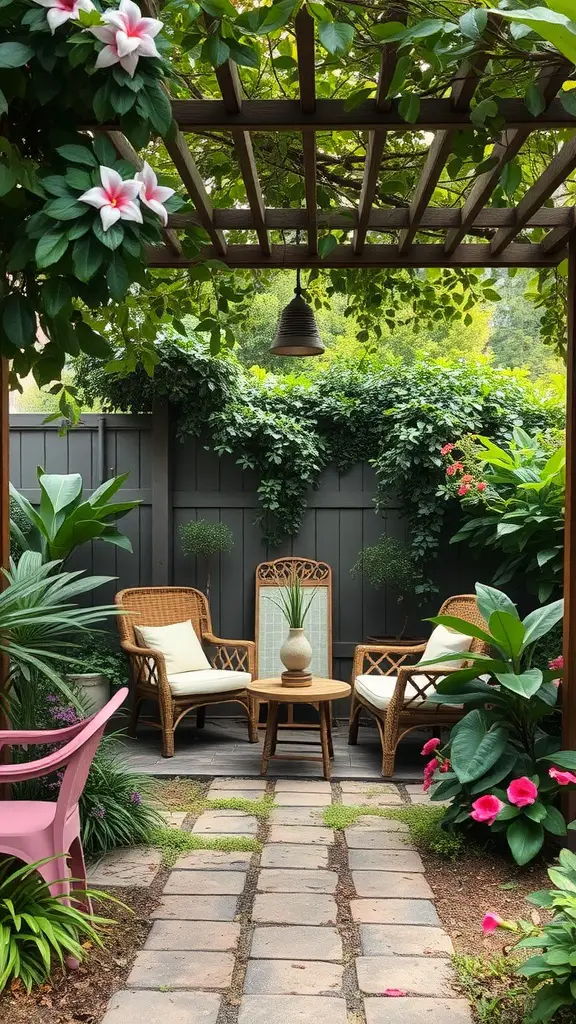
Imagine stepping into a serene nook of your garden, where the sunlight filters through lush green leaves, and a gentle breeze rustles the flowers. This tranquil seating area is the perfect retreat for relaxation. Here, a charming arrangement of wicker chairs invites you to sit back and enjoy nature.
The subtle pink accents of the chairs and flowers provide a lovely contrast against the deep greens of the surrounding foliage. A small, round table stands ready for your favorite drink or a good book, making it an ideal spot for quiet afternoons or evening chats.
The pergola overhead adds a cozy touch, ensuring that you feel sheltered yet connected to the outdoors. Hanging plants and the vibrant blooms create a lively atmosphere, enhancing the sense of peace. With a few comfortable cushions, this space becomes even more inviting, encouraging you to linger a little longer.
This seating area is not just a place to relax; it also serves as a great backdrop for gatherings with friends or family. Whether you’re enjoying morning coffee or unwinding after a long day, creating a tranquil spot in your shade garden can transform your outdoor space into a personal oasis.
Layered Planting for Depth

Layered planting is a great way to add depth and interest to your shade garden. The image shows a variety of plants arranged in layers, creating a lush and inviting space. You can see tall plants in the background and shorter ones in the foreground, which helps to guide the eye through the garden.
Using a mix of foliage colors and textures adds visual appeal. The broad leaves of the plants contrast beautifully with the delicate flowers and slender grasses. This balance creates a dynamic look that feels vibrant and alive.
When planning your own layered garden, think about how different plants can complement each other. Choose some that thrive in the shade and vary their heights. This way, you can showcase the beauty of each plant while also creating a natural flow throughout the space.
Don’t forget to consider seasonal changes. Incorporating plants that bloom at different times can keep your garden looking fresh all year long. Overall, layered planting is not just about aesthetics; it also promotes biodiversity in your garden, making it a more resilient ecosystem.
Using Garden Art to Enhance Appeal
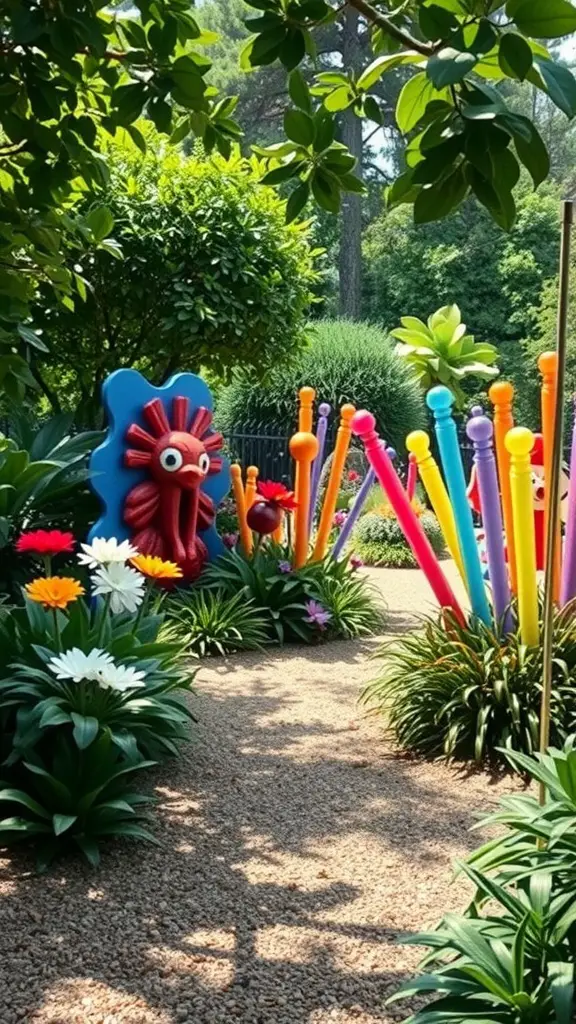
Garden art can breathe new life into any shaded space. In the image, playful elements like colorful poles and a whimsical creature create a cheerful atmosphere. The bold colors stand out beautifully against the green foliage, adding a touch of joy to the garden.
Incorporating bright art pieces can transform a standard shade garden into an inviting retreat. The playful design in the image invites curiosity and draws the eye, making it a focal point. Consider adding your own quirky garden art to create a unique vibe.
Flowers like the white and yellow blooms in the foreground complement the colorful installations. This combination of natural beauty and artistic flair can make your shaded garden feel lively and vibrant. By mixing textures and colors, you can create your own delightful sanctuary.
Native Plant Selection for Sustainability
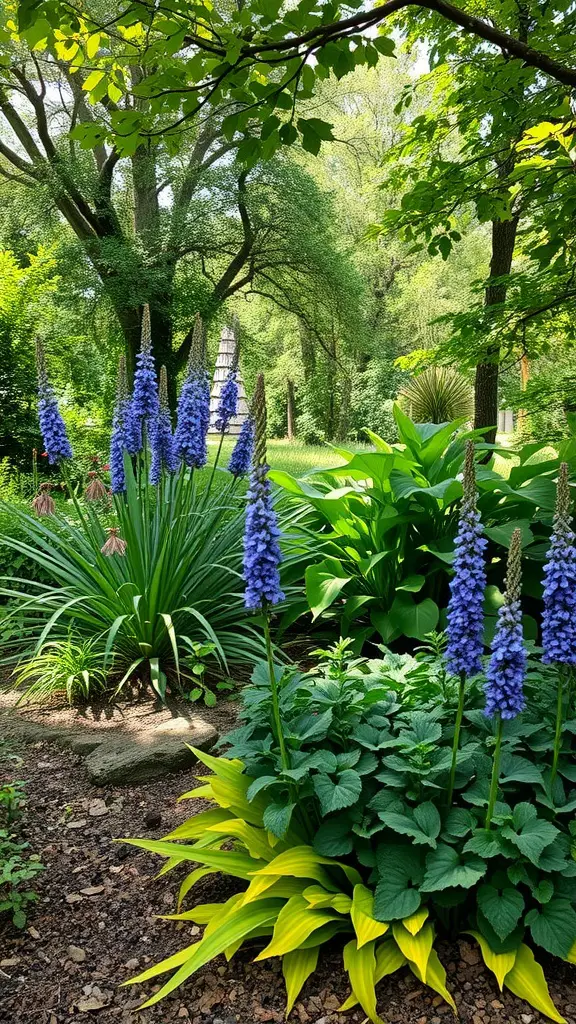
When planning a shade garden, choosing plants native to your area is a smart move. Native plants thrive in local conditions, requiring less water and maintenance compared to non-natives. The image captures a vibrant display of native flora, showcasing how beautiful these plants can be in a shaded setting.
The tall blue flowers in the foreground draw attention, while the lush green foliage creates a rich tapestry of colors and textures. This combination not only enhances the beauty of your garden but also supports local wildlife, providing habitats for pollinators like bees and butterflies.
Incorporating plants that have adapted to the local climate means that you’ll spend less time worrying about pests and diseases. Plus, you’ll contribute to a healthier ecosystem. Consider adding hostas and other shade-tolerant natives to your garden. They can add dimension and depth, making your space feel alive.
Using native plants is a great way to ensure your shade garden is both sustainable and visually appealing. Embrace the natural beauty around you, and watch as your garden flourishes with minimal effort!
Incorporating Water Features

Water features can transform a shade garden into a peaceful retreat. In the image, you can see a beautiful pond surrounded by lush greenery. The vibrant lily pads and striking water lilies add a splash of color amidst the shades of green.
The natural flow of water creates soothing sounds, which enhance the tranquil atmosphere. When designing your shade garden, consider including elements like fountains or small waterfalls. These can serve as focal points and attract wildlife, such as birds and butterflies, adding life to your garden.
Reflective surfaces, like the water in the pond, can also brighten up darker areas. They catch light and create visual interest, making your garden feel more dynamic. The stones surrounding the pond add texture and help blend the water feature into the natural setting.
Don’t forget to choose aquatic plants that thrive in partial shade. They can thrive alongside your other shade-loving plants. Incorporating a water feature is a delightful way to enhance the serenity and beauty of your outdoor space.
Seasonal Blooms for Continuous Interest
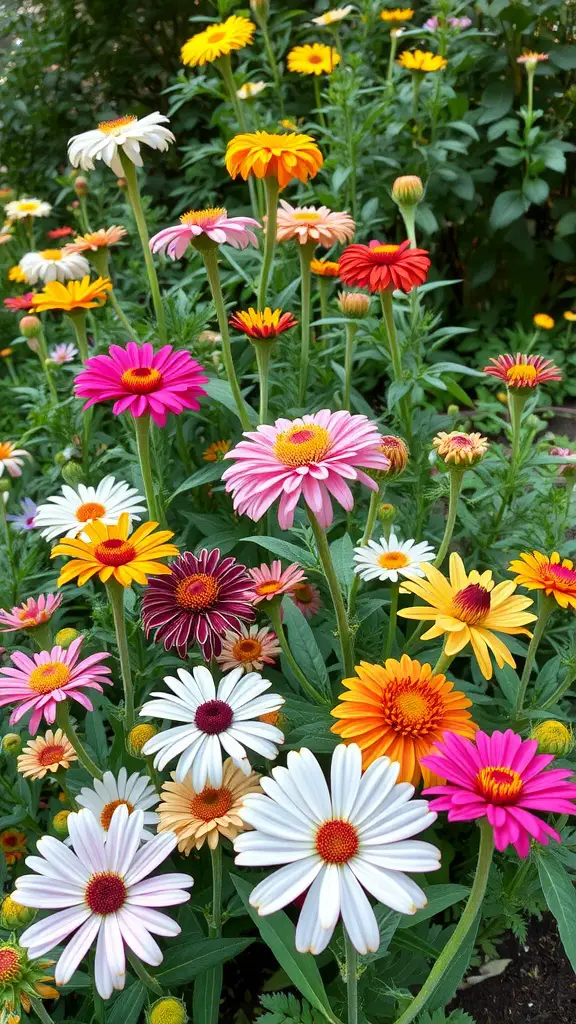
When it comes to a shade garden, adding seasonal blooms can make a big difference. The vibrant colors of flowers, like those seen in the image, create a lively atmosphere even in shaded areas. This particular arrangement showcases a mix of daisies that can thrive without direct sunlight.
Each flower brings its unique hue, ranging from sunny yellows to soft pinks. These cheerful blooms not only brighten the garden but also attract pollinators like bees and butterflies. Incorporating different varieties ensures that something is always in bloom, providing year-round interest.
Don’t forget to plan for different blooming times! By selecting early, mid, and late-season flowers, you can ensure that your garden remains colorful throughout the seasons. This strategy keeps the space looking fresh and engaging, creating a little slice of joy in those shaded corners.
Foliage Textures and Colors

Creating a beautiful shade garden is all about embracing the variety of foliage textures and colors. In the image, you can see a mix of vibrant greens, luscious ferns, and unique plant shapes. These elements come together to form a lush tapestry that’s both inviting and calming.
The ferns, with their delicate fronds, add a soft, feathery look to the garden. They contrast nicely with the broader leaves of other plants, providing a dynamic visual experience. Notice how the light dances on the leaves, highlighting their rich textures. This interplay makes the garden feel alive and full of movement.
Incorporating plants with different leaf shapes and colors is key. For instance, the striped leaves in the foreground add a splash of brightness that draws the eye. The darker greens in the background create depth and can make the lighter colors pop even more.
When planning your own shade garden, think about how you can layer these textures and colors. Mixing plants with bold, broad leaves alongside those with fine, delicate foliage can create contrast that’s both pleasing to the eye and easy to maintain.
Creating Vertical Layers with Climbers
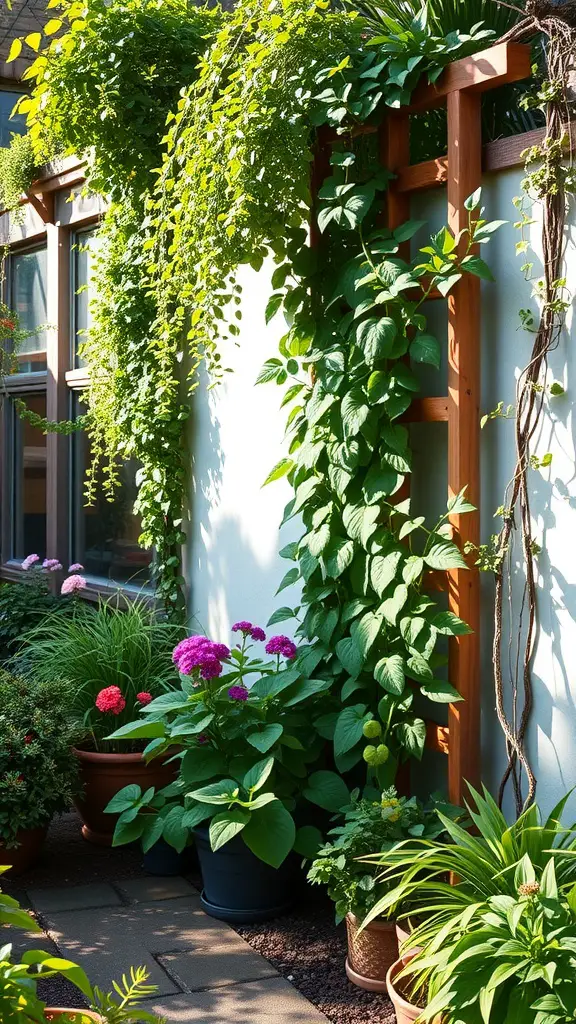
In a shade garden, vertical layers can bring a whole new dimension to your space. Using climbing plants is one of the easiest ways to achieve this. The image shows a beautiful arrangement of climbers reaching up along a trellis, creating a lush green backdrop.
The climbing plants are not only visually appealing, but they also provide a sense of privacy and intimacy in your garden. They offer a perfect way to use vertical space, especially when you have limited ground area. You can mix different climbers to add texture and variety.
Consider pairing vibrant flowers with leafy vines for a pop of color. In the image, you can see colorful blooms nestled among the greenery, which adds interest and depth. This combination also attracts pollinators, enhancing your outdoor environment.
Using pots with climbing plants can break up the garden floor and create natural barriers. The arrangement in the image highlights how potted plants can complement climbers on a trellis. This method is ideal for small spaces or patios where you want to create a cozy atmosphere.
Colorful Shade Tolerant Perennials

Creating a shade garden can be a delightful challenge, especially when it comes to choosing the right plants. This vibrant image showcases a stunning array of shade-tolerant perennials that can breathe life into those dimmer areas of your garden.
In the forefront, you see a mix of pink and purple blooms, with their bright colors standing out against the lush green foliage. The tall, blue flowers add height and drama to the scene, creating layers of visual interest. Each flower contributes its unique charm, making the garden feel alive and inviting.
Consider incorporating similar perennials like these in your own garden. They thrive in shaded areas and offer beautiful hues that can brighten up any corner. Pairing different flower types can create a dynamic display that changes with the seasons, ensuring your garden remains lively all year round.
Remember to choose plants that not only thrive in shade but also complement each other in color and form. The combination of these vibrant blooms can transform your outdoor space into a colorful retreat, making it a spot to relax and enjoy nature.
Edible Plants Thriving in Shade

If you’ve ever thought that shade means limited gardening options, think again! The image shows a lively garden with green leaves and pops of color from flowers, all thriving under a canopy of trees. This kind of environment can actually be home to many edible plants.
Take a look at the dense foliage in the image. Plants like hostas, while often used for their ornamental value, are also edible. The young leaves can be harvested and cooked like spinach. The bright purple flowers are likely from a plant that can attract pollinators, which is a bonus when you’re growing food!
In this shaded area, you might also spot some herbs and leafy greens like mint or chard. These plants love a bit of shade, and their vibrant green leaves stand out beautifully against the darker background. They’re not just good for cooking; they add flavor and nutrition to meals.
Creating a shade garden can be rewarding and delicious. If you combine fun seating elements, like the teal chairs in the picture, with your edible plants, you’ll have a perfect spot to relax and enjoy your garden bounty. So go ahead, explore the wonderful world of shade gardening!
The Role of Mulching in Moisture Retention

In a shade garden, mulching plays a key role in maintaining soil moisture. The image shows a lush patch of young plants surrounded by a thick layer of mulch. This combination is not just visually appealing; it serves practical purposes too.
Mulch acts as a protective barrier that helps to reduce evaporation. When the sun’s rays hit the ground, mulch keeps moisture locked in, ensuring that plants have access to the water they need. The dark color of the mulch can absorb heat, which may further assist in warming the soil, benefiting growth.
Additionally, as organic mulch breaks down, it enriches the soil with nutrients. In a shaded area where soil can be cooler and damp, this nutrient boost can make a big difference in plant health. Using mulch in a shade garden means that you’re not just taking care of moisture levels—you’re also helping the plants thrive.
Choosing the right type of mulch is essential. Options like wood chips, shredded leaves, or bark can all serve the purpose well. Aim for a layer about 2-3 inches deep, as this thickness strikes a balance between moisture retention and allowing air circulation for the plants.
Creating Contrast with Dark-Hued Plants

When it comes to shade gardens, dark-hued plants can create a striking contrast that brings depth and interest to your space. The image here showcases a variety of plants with rich, deep colors, including dark greens and purples. These hues not only stand out against lighter foliage but also complement the overall design of a shaded area.
Consider using plants like Heuchera or Ajuga, which have dark leaves and can thrive in low-light conditions. Their bold colors can anchor your garden and provide a visual base. Pairing these with lighter or even variegated plants helps to highlight their beauty and creates a layered effect.
In this image, you can see how the textured leaves add dimension to the garden. The contrasting shapes and colors draw the eye and invite exploration. It’s all about balancing the dark and light elements to create a harmonious environment. You might also want to incorporate flowering plants with darker blooms to enhance the contrast.
Dark-hued plants can also evoke a sense of tranquility, making them perfect for creating a peaceful retreat in your garden. By thoughtfully selecting and arranging these plants, you can transform a simple shaded area into a captivating oasis that feels both inviting and serene.
Moss and Ground Covers for a Lush Floor

Imagine stepping into a serene garden where the floor is a vibrant carpet of moss. This image perfectly captures that feeling. The lush green moss creates a soft, inviting surface that feels soothing underfoot. It adds a natural charm that makes any garden feel more alive.
Moss is not just for looks; it’s also incredibly beneficial. It thrives in shady areas where other plants might struggle. This makes it a fantastic choice for creating a lush floor in shade gardens. Plus, it helps improve soil moisture retention, keeping the area cool and damp.
Incorporating different types of moss and ground covers can create a playful texture. Notice how the moss in the image has a bubbly pattern, which can add depth and interest to your garden design. You can mix in small stones or pebbles between the moss for added contrast.
Ground covers like creeping thyme or sweet woodruff can also complement the moss perfectly. These plants can fill in gaps and provide additional color and fragrance. With the right combination, your garden floor can transform into a beautiful, inviting space.
Shade Garden Wildlife Habitat

A shade garden can be a lovely sanctuary for wildlife, providing food and shelter for various creatures. This image showcases a well-designed garden area, nestled under the leafy canopies of trees. The lush greenery and thoughtful structures make it inviting for birds and other small animals.
Notice the bird feeder in the background, a perfect spot for feathered friends to gather. It not only attracts birds but also adds life to the garden. The small, wooden shelter offers protection, creating a cozy retreat for critters seeking safety. By placing these elements in a shaded area, you create a natural habitat that supports local wildlife.
Incorporating native plants in your shade garden can further enhance the wildlife experience. They provide essential food sources and help maintain the ecosystem. The mix of hostas and other greenery shown here not only thrives in low light but also offers hiding spots for small animals. It’s a great way to connect with nature right in your backyard.
Make your garden a home for wildlife by being mindful of their needs. Water sources, like the birdbath visible in the image, are crucial for attracting creatures. Keep your garden well-maintained, and you’ll enjoy the benefits of watching nature unfold right outside your window.
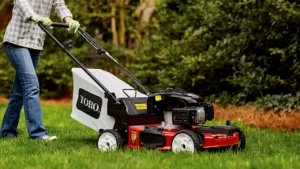
Hmm is anyone else encountering problems with the images on this
blog loading? I’m trying to find out if its a problem on my end or if it’s the blog.
Any feedback would be greatly appreciated.
casino en ligne
Very descriptive blog, I loved that a lot. Will there be
a part 2?
casino en ligne
I like the helpful information you provide in your articles.
I’ll bookmark your blog and check again here frequently.
I’m quite certain I will learn lots of new stuff right here!
Good luck for the next!
casino en ligne
This is my first time visit at here and i am truly happy to read everthing at one place.
casino en ligne
What’s up Dear, are you in fact visiting this
web site daily, if so afterward you will definitely take nice knowledge.
meilleur casino en ligne
Hi, after reading this awesome article i am as well delighted to share my
experience here with mates.
casino en ligne
Heya i am for the first time here. I came across this board and I find It truly useful & it helped me out a lot.
I hope to give something back and help others like you aided me.
casino en ligne fiable
I do trust all of the ideas you have introduced in your post.
They are very convincing and will certainly work. Still, the
posts are very short for starters. May just you please
lengthen them a bit from subsequent time?
Thank you for the post.
casino en ligne
I am sure this paragraph has touched all the internet viewers, its really really
pleasant paragraph on building up new weblog.
casino en ligne francais
You’ve made some decent points there. I checked on the net to learn more about the issue and found most people will go
along with your views on this web site.
casino en ligne francais